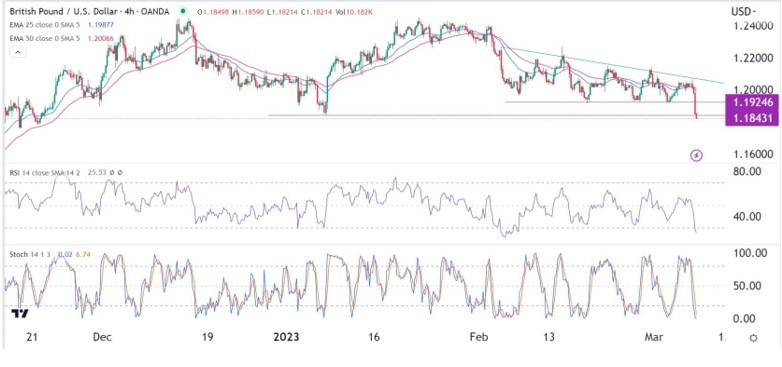Bearish view
- Sell the GBP/USD pair and set a take-profit at 1.1700.
- Add a stop-loss at 1.2000.
- Timeline: 1-2 days.
Bullish view
- Buy the GBP/USD pair and set a take-profit at 1.200.
- Add a stop-loss at 1.1700.
The GBP/USD pair dived to November lows after a hawkish statement by Jerome Powell and a warning by a Bank of England (BoE) official about the British pound. It dropped to a low of 1.1830, which was about 4.85% below the highest level this year.
BoE and Fed statements
The GBP/USD pair pulled back after a statement by Catherine Mann, a Bank of England official. In a statement, she warned that the British pound could continue falling in the next few months. She noted that most of the Fed hawkish tone has already been priced into the current price.
“With the BOE seeminglShe expects the weaker pound to trigger higher inflation in the country. Her sentiment was supported by a UBS analyst, who told Bloomberg that:y at the more dovish end of the central bank spectrum, sterling might continue to struggle against the euro and the dollar in the short term. Nevertheless, we still expect the pound to gain ground against these currencies by the end of the year.”
The pair then plunged after the hawkish statement by the Federal Reserve chair. In his first day of testimony, Jerome Powell warned that the Fed would likely continue hiking interest rates in the coming months. He also expects that the bank’s terminal rate will be much higher than what analysts expect.
Therefore, analysts expect that the Federal Reserve will hike interest rates by 0.50% in March followed by two more 0.25% hikes until June. As such, US interest rates will remain significantly higher than those in the UK.
The GBP/USD pair will next react to the upcoming ADP private payroll data. Economists expect that private companies added 200k jobs in February. The US will publish the latest trade and mortgage numbers.
GBP/USD forecast
The GBP/USD pair made a bearish breakout after the Jerome Powell and Mann statements. It managed to move below the important support level at 1.1924, where it struggled to move below on February 17, 27, and March 2. It was also the lower side of the descending triangle pattern.
The pair has moved below the 50-day moving average while the RSI and Stochastic oscillator have continued falling. Therefore, the British pound will likely continue falling, with the next support being at 1.1700.

Ready to trade our daily Forex signals? Here’s a list of some of the best Forex brokers in the UK to check out.
